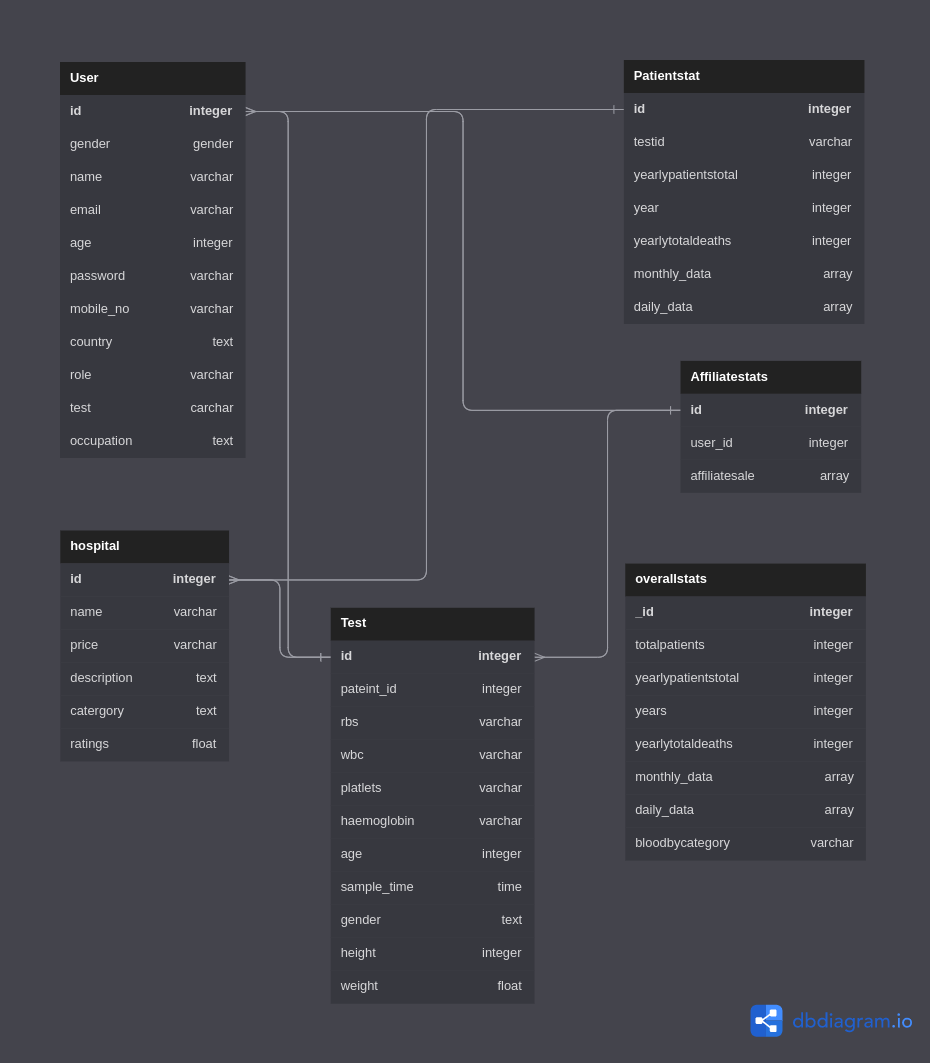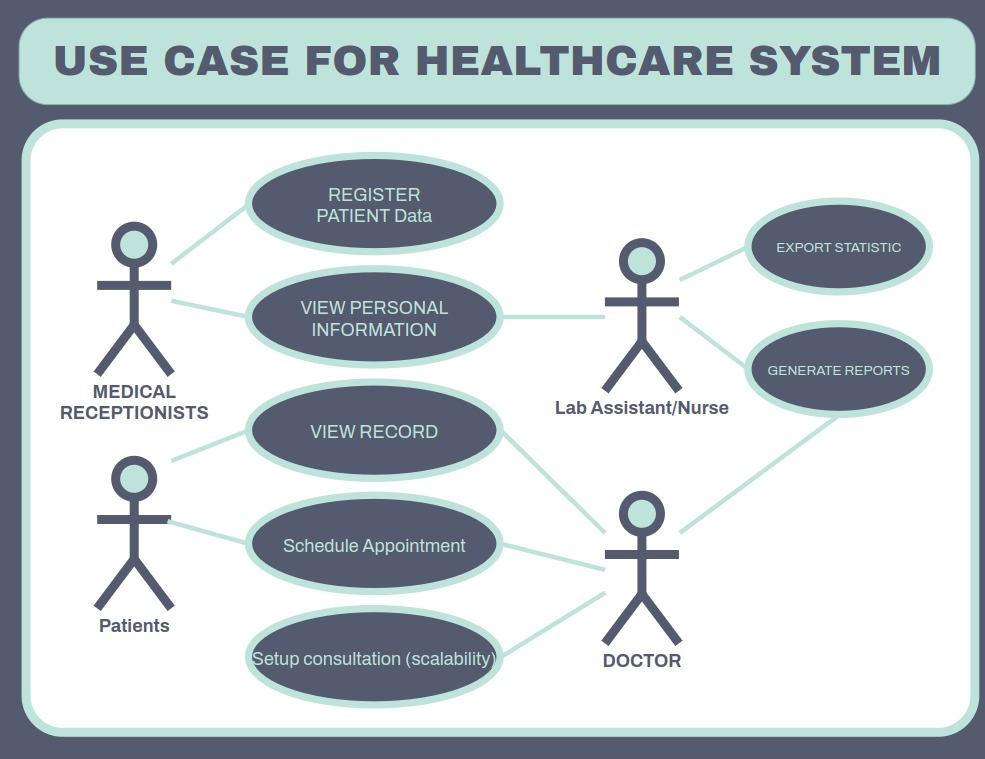The goal of this project is to build a dashboard analyzing the healthcare database along with knowledge graph. We can analyze various trends in the patient's data like patient's basic data (height,weight,etc), medical observations,blood reports,genome sequence data,etc.
Prerequisites:
- Node
For Linux:
curl -sL https://deb.nodesource.com/setup_13.x | sudo -E bash -
sudo apt-get install -y nodejs
For Mac:
brew install node
- Clone the repository and and go inside the folder, or download the zip file and extract it.
cd server
npm install
It should start installing npm packages but in case if still doesn't work, run the following command.
nvm install v18.16.0
npm install
- After this make a new file with name
.envin theserverfolder and write the following code in it.
MONGO_URL = mongodb+srv://skywalker2207:2207@dfs.b2wqoik.mongodb.net/?retryWrites=true&w=majority
PORT = 5001
- Now run the following command to setup backend and start the server.
npm install mongoose -g
npm run start
- open another terminal and go inside the
datafolder and run the following command.
pip install -r requirements.txt
python3 server.py
This comletes our backend setup.
- Now go inside
clientfolder and make a.env.localfile and paste the following code in it.
REACT_APP_BASE_URL = http://localhost:5001
- Now run the following command to setup frontend and start the server.
nvm install v18.16.0
npm install
npm run start
This will launch the frontend.
The platform must be able to store and manage basic patient data, including demographic information, medical history, and contact information. We are not adding a way for a patient to input their data; assuming we have patient data, we will display all the data for a better understanding.
The platform must be able to manage medical observations, including vital signs, physical examination findings, and diagnostic imaging results.
The platform must be able to store and manage blood reports, including complete blood counts, blood chemistries, and other blood test results.
Patients must be able to access and share their healthcare data with authorized healthcare providers and other authorized individuals
Stakeholders must be able to view their schedule and must need a feature to add appointment to schedule.
Information present must be critically analysed varying with different metrics tounderstand the trend and to ind similarity or differences with some other data.
Stakeholder must view all the information at once as graph to find the correlation between data and particular field for which most of the people are affected in order to ind a relation or trend.
The platform must be able to support a large number of concurrent users and must have a response time of fewer than 2 seconds.
The platform must have strong security measures in place to protect the confidentiality and privacy of patient data.
The platform must have a user-friendly interface that is easy for patients to use.
The platform must be able to interface with other healthcare systems and data sources to ensure that patient data is up-to-date and accurate.
The platform must be able to represent data in a way that is easy for patients to understand.
This flowchart is a graphical representation of a process that depicts the steps involved in completing a our project or task.
Documentation: Link
The project is structured as follows:
images/: Contain all images for README files
-
client/: Contain all frontend codenode_modules: Contains all the npm packages.public: Contains all the static files and index.html file.src: Contains all the source code for the project.assets: Contains all the assets of the project.components: Contains all the components of the project.data: Contains all the mock data files.scenes: Contains all the scenes of the project.state: Contains all the state of the project.App.js: Contains the main component of the project.index.js: Contains the code rendering the main component.index.css: Contains the styling for the main component.package.json: Contains all the npm packages.package-lock.json: Contains all the npm packages.README.md: Contains all the information about the project.
-
server/: Contain all backend code-
node_modules: Contains all the npm packages. -
data: Contains all the data files.healthcare_data.csv: Contains all the data in csv format.data_generator.py: Contains the code to generate data.server.py: Contains the code to connect to the database.requirements.txt: Contains all the requirements for the project
-
models: Contains all the models of the project. -
routes: Contains all the routes of the project. -
index.js: Contains the main component of the project. -
package.json: Contains all the npm packages. -
package-lock.json: Contains all the npm packages. -
README.md: Contains all the information about the project.
-
README.md: The README file for the project.SRS.pdf: The SRS file for the project.
demovideo.mov
knowledge.graph.mov
-
Requirements:
The first step in the traceability process is to document the requirements for the healthcare data analytics system. These requirements might include the ability to generate statistics on diseases, patients, death tolls, their relation to blood group, and test reports, as well as the ability to filter certain sections of patient reports, analyze the spread of certain diseases throughout the world, and incorporate blood reports, general physical report, and past disease report. The requirements also include the preparation of a knowledge graph that can be used to view certain relations and predict some information or observe a trend. Additionally, the updated requirements include the functionality to view and download reports and schedule appointments. The requirements should be specific, measurable, achievable, relevant, and time-bound.
-
Design:
Once the requirements are defined, the next step is to create a design that meets those requirements. The design might include a database schema for storing patient data, algorithms for analyzing the data, and a web interface for viewing the data, downloading reports, and scheduling appointments. The design should be traceable back to the requirements, so that each requirement is clearly linked to a design element.
-
Code:
The design is then used as the basis for writing the software code. The code might include SQL queries for retrieving data from the database, Python scripts for analyzing the data, and HTML/CSS/JavaScript code for creating the web interface, allowing users to view, download reports, and schedule appointments. The code should be traceable back to the design, so that each design element is clearly linked to a code module.
-
Test:
Once the code is written, it is tested to ensure that it meets the project requirements. The testing might involve unit testing of individual code modules, integration testing of the entire system, and user acceptance testing to ensure that the system meets the needs of the stakeholders. The testing should be traceable back to the code, so that each code module is clearly linked to a test case.
-
Solution Feature:
Finally, the healthcare data analytics system is implemented, which is the complete solution for the project. The system should be traceable back to the requirements, so that each requirement is clearly linked to a solution feature. The system might include features such as the ability to generate statistical reports on diseases, patients, death tolls, and blood groups, the ability to filter patient reports based on certain criteria, and the ability to analyze the spread of diseases throughout the world. Additionally, the system might incorporate blood reports, genome sequencing report, general physical report, and past disease report, allowing for a more comprehensive analysis of patient data. Furthermore, the system might generate a knowledge graph from all the patient's data, allowing for more advanced analysis and insights. The knowledge graph can be used to view certain relations and predict some information or observe a trend, improving the system's ability to provide meaningful insights. The updated solution features include the functionality to view and download reports, as well as schedule appointments, improving the system's usability and accessibility.
By mapping the requirements to the design, code, test, and solution features, traceability ensures that the healthcare data analytics system stays on track and that all components are aligned with the project goals and objectives. This helps to reduce the risk of project failure and ensures that the final solution meets the needs of the stakeholders, including healthcare providers and patients.
- Nikhil aggrawal (2020102021)
- Mitul Garg (2020102026)
- Atharv Sujlegaonkar (2020102025)


